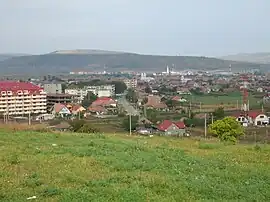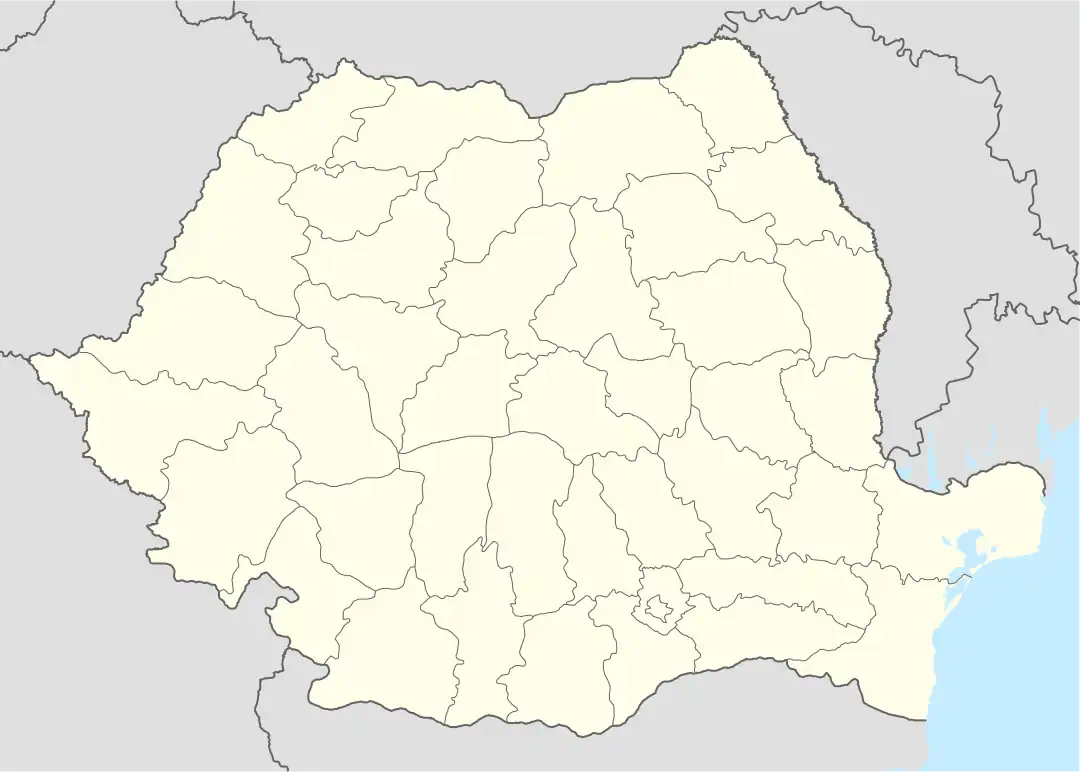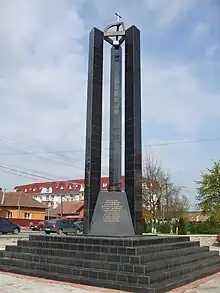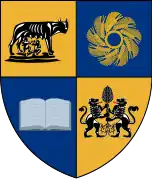Apahida | |
|---|---|
 | |
 Location in Cluj County | |
 Apahida Location in Romania | |
| Coordinates: 46°48′28″N 23°44′24″E / 46.80778°N 23.74000°E | |
| Country | Romania |
| County | Cluj |
| Established | 1263 |
| Subdivisions | Apahida, Bodrog, Câmpeneşti, Corpadea, Dezmir, Pata, Sânnicoară, Sub Coastă |
| Government | |
| • Mayor (2020–2024) | Grigore Fati[1] (PSD) |
| Area | 106.02 km2 (40.93 sq mi) |
| Population (2021-12-01)[2] | 17,239 |
| • Density | 160/km2 (420/sq mi) |
| Time zone | EET/EEST (UTC+2/+3) |
| Postal code | 407035 |
| Area code | +40 x64 |
| Vehicle reg. | CJ |
| Website | www |
Apahida (Hungarian: Apahida; German: Bruckendorf; Latin: Pons Abbatis) is a commune in Cluj County, Transylvania, Romania. It is composed of eight villages: Apahida, Bodrog (Bodrog), Câmpenești, Corpadea (Kolozskorpád), Dezmir (Dezmér), Pata (Kolozspata), Sânnicoară (Szamosszentmiklós) and Sub Coastă (Telekfarka).
In 1889 and 1968 two rich archaeological treasures were discovered here. Apahida is an important road junction in Cluj County, as it links Cluj County with Mureș County, through DN16. It also provides quick access (approximately 20 minutes) from Cluj-Napoca to Băile Cojocna, famous for its salt waters and their curing properties.
Demographics
At the 2011 Romanian census, Apahida had a population of 10,685. According to the census from 2002, there was a total population of 8,785 people living in this town. Of this population, 91.17% were ethnic Romanians, 4.61% are ethnic Hungarians, and 4.13% ethnic Romani.[3]
People
- Ioan Lemeni (1780–1861), prelate, Bishop of Făgăraș and Primate of the Romanian Greek Catholic Church
Notes
- ↑ "Results of the 2020 local elections". Central Electoral Bureau. Retrieved 11 June 2021.
- ↑ "Populaţia rezidentă după grupa de vârstă, pe județe și municipii, orașe, comune, la 1 decembrie 2021" (XLS). National Institute of Statistics.
- ↑ "Structura Etno-demografică a României".

.JPG.webp)
